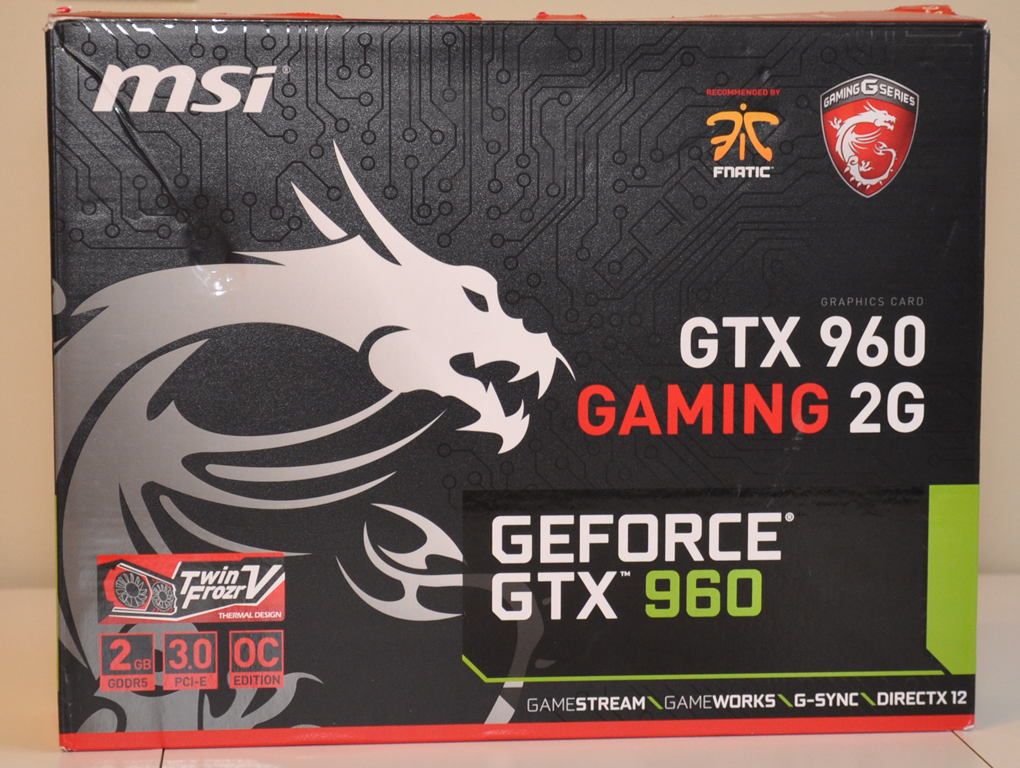MSI GeForce GTX 960 GAMING 2G
Nvidia launched the hotly-anticipated GeForce GTX 960 back in January 2015. The GPU is targeted directly at gamers who play at 1080p or lower resolutions. The company was met with much criticism about some of the specifications, such as the 2GB frame buffer and 128-bit bus width, from people who believed that the card wouldn’t hold up with the most current games hitting the market. Let’s see if the critics are right, shall we?
Today we’ll be taking a close look at MSI’s GeForce GTX 960 GAMING G2.
This is a custom PCB card with MSI’s familiar TwinFrozerV fan configuration. The contrasting red and black colors give it one of the sharpest appearances of any card I’ve seen lately. The card measures 280mm long, 140mm tall and 37mm wide, and weighs in at a solid 763 grams.
Running through the heatsink are 4 plated copper heatpipes. Three of them stick out the top, and they have been bent in a way that not only keeps them compact, it gives a nice uniform look to the design. The fins are made of aluminum, and they are quite densely packed. The density might be a positive factor in this case. The fans are designed to not turn on unless the GPU reaches 65°C, however it was observed that this rarely happened. Even while playing some demanding games the fans were almost never spinning. The efficiency of Maxwell is really demonstrated with this card.
The official specifications for the GTX 960 GPU are more or less a baseline; however, since there is no reference PCB design for the GTX 960, most OEMs ignore the suggested specs and usually come overclocked right from the factory. MSI has opted to preprogram the BIOS for three different modes, each one slightly more overclocked.
The first mode is called silent mode, and in fact is exactly the same as Nvidia’s specifications; 1127Mhz core clock, with a 1178Mhz boost. Gaming mode bumps the clocks up mildly to 1190Mhz with a boost of 1253Mhz. And OC mode gives a fairly aggressive 1216Mhz base and 1279Mhz boost clock. In each mode the memory clock remains at 7010Mhz. Of course we’ll be testing the limits with our own overclocking tests.
Despite the overclocked nature of the card, as I previously mentioned the fans rarely spun up even while playing some games. This was somewhat of a surprise considering there is no backplate on MSI’s GTX 960. The addition of a backplate usually aids in thermal control of the memory modules located on back of the card. It seems the thermal solution that the company provides is quiet efficient at dissipating the heat.
Along the top edge of the card is an illuminated MSI logo. White LEDs light it up when power is flowing through the card. Here you’ll also find the single SLI finger and an 8-pin PCI-E power connector.
MSI chose to stick with the reference I/O specification and included three display ports, a single HDMI, and a single DVI port. Four of the five outputs can be used simultaneously for up to a 3+1 setup. This allows games to be played in surround, while maintaining an extra desktop display.
The packaging was designed well. The card is found surrounded by soft foam, with ample impact space in all directions. Included in the box is a driver disk, quick start manual, and an MSI marketing product guide. You’ll also find a DVI-to-VGA adapter in case you need to use an older monitor.













